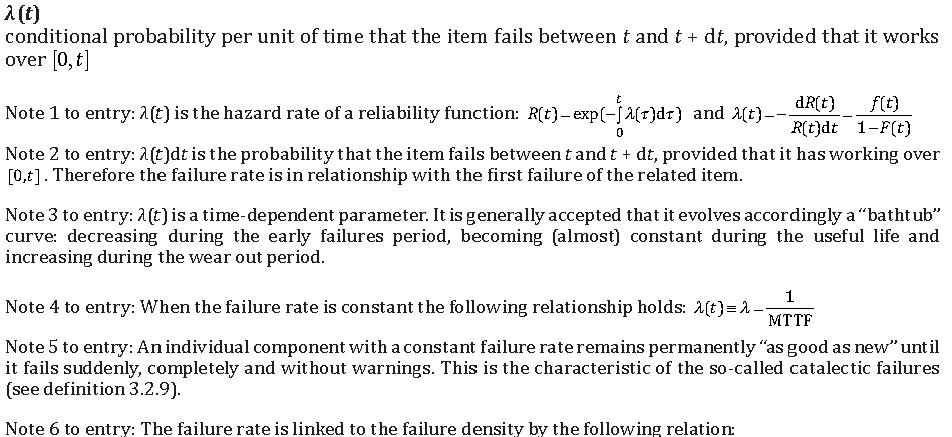Definition(s)
Failure Rate
Limit, if this exists, of the ratio of the conditional probability that the instant of time, T, of a failure of an item falls within a given time interval, [t, (t + Δt)] and the length of this interval, Δt, when Δt tends to zero, given that the item is in an up state at the beginning of the time interval. See ISO 14224:2006, Clause C.3 for further explanation of the failure rate.
NOTE 1 In this definition, t may also denote the time to failure or the time to first failure.
NOTE 2 A practical interpretation of failure rate is the number of failures relative to the corresponding operational time. In some cases, time can be replaced by units of use. In most cases, the reciprocal of MTTF (3.1.25) can be used as the predictor for the failure rate, i.e. the average number of failures per unit of time in the long run if the units are replaced by an identical unit at failure.
NOTE 3 The failure rate can be based on operational time or calendar time.
Source: ISO 20815:2008, Petroleum, petrochemical and natural gas industries – Production assurance and reliability management. Global Standards
Failure Rate
3.1.18

 Source: ISO/TR 12489:2013(E) Reliability modelling and calculation of safety systems. Global Standards
Source: ISO/TR 12489:2013(E) Reliability modelling and calculation of safety systems. Global Standards